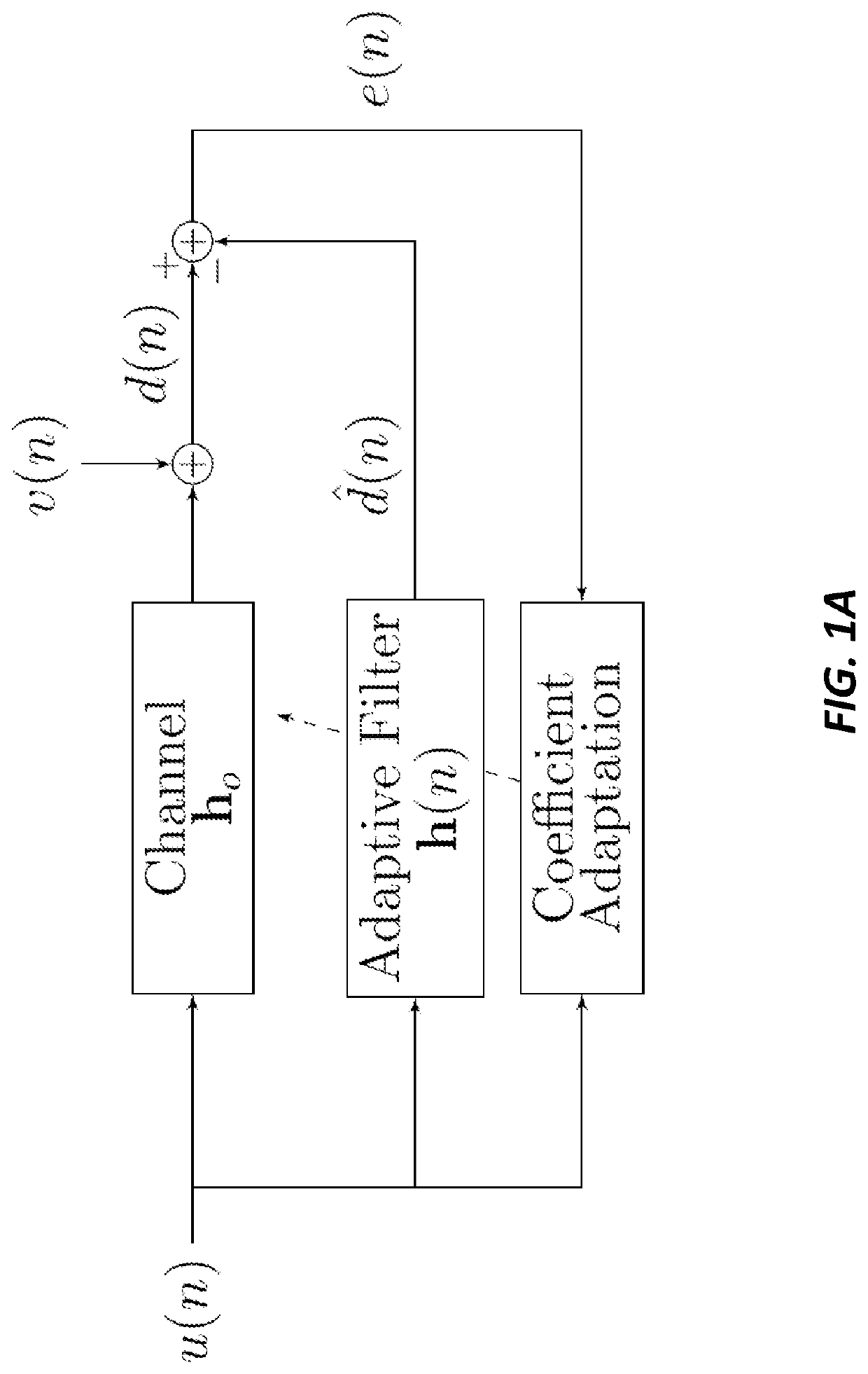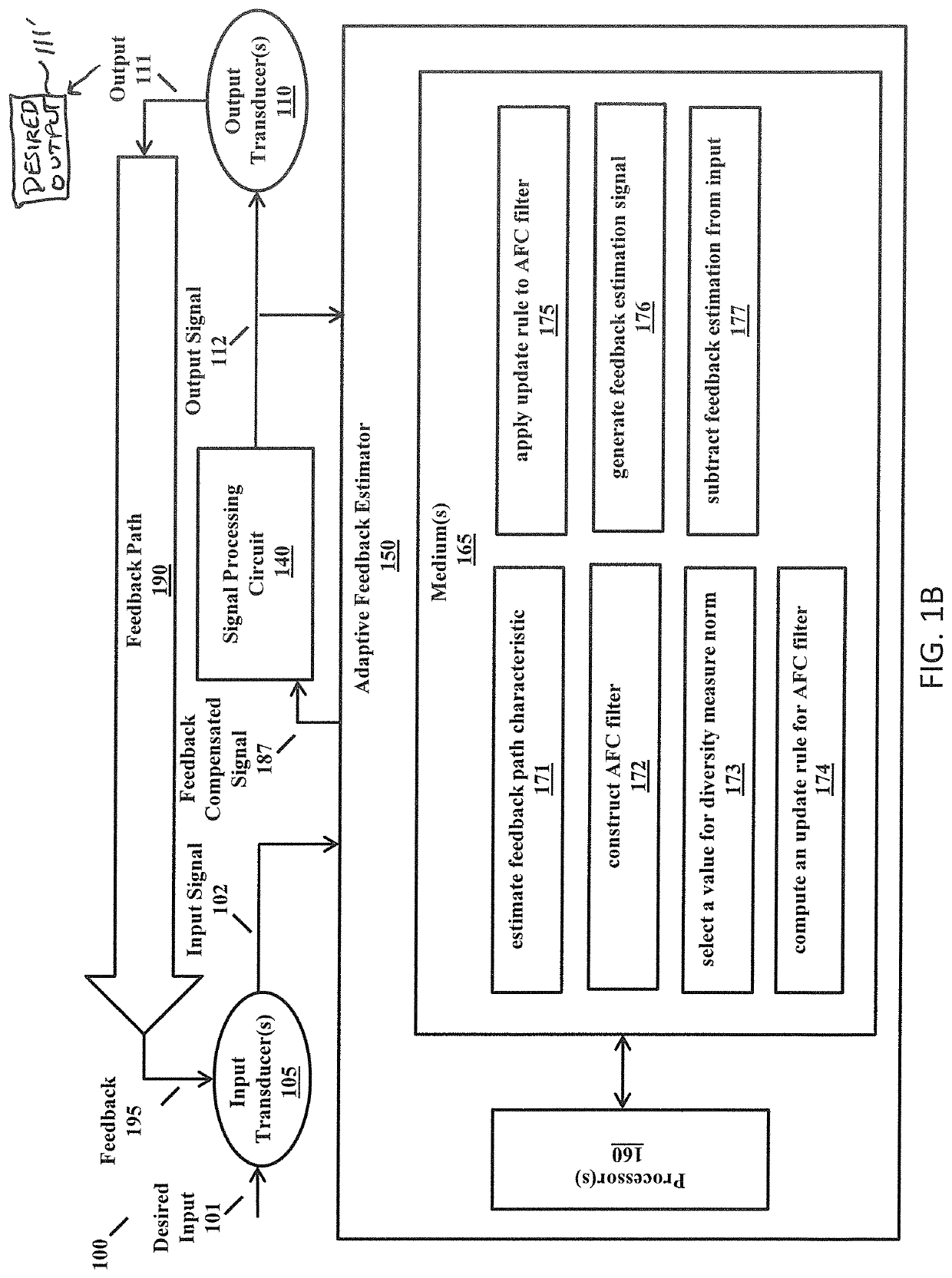Sparsity-aware adaptive feedback cancellation
a feedback cancellation and adaptive technology, applied in repeater circuits, instruments, line-transmission details, etc., can solve problems such as distortion at the input, many fxlms systems and methods may be biased, and many lms systems and methods may be slow to adap
- Summary
- Abstract
- Description
- Claims
- Application Information
AI Technical Summary
Benefits of technology
Problems solved by technology
Method used
Image
Examples
Embodiment Construction
[0027]Systems and methods according to present principles are directed to improved algorithms employing special LMS methods that employ updating functionality. Two examples are provided below, although other examples will also be understood given the description that follows, including the figures and claims. The examples are in the field of adaptive feedback cancellation and beamforming.
[0028]Adaptive filters have been a research topic of interest for decades and have many potential applications such as in acoustic echo cancellation, active noise cancellation, channel equalization, speech processing, image processing, radar signal processing, among others. The most well-known adaptive filtering algorithms are the least mean squares (LMS) and the normalized LMS (NLMS) algorithms, which have been deployed in many practical applications due to their simplicity and effectiveness. In several applications, the impulse responses (IRs) that need to be identified are often sparse; i.e., whe...
PUM
 Login to View More
Login to View More Abstract
Description
Claims
Application Information
 Login to View More
Login to View More - R&D
- Intellectual Property
- Life Sciences
- Materials
- Tech Scout
- Unparalleled Data Quality
- Higher Quality Content
- 60% Fewer Hallucinations
Browse by: Latest US Patents, China's latest patents, Technical Efficacy Thesaurus, Application Domain, Technology Topic, Popular Technical Reports.
© 2025 PatSnap. All rights reserved.Legal|Privacy policy|Modern Slavery Act Transparency Statement|Sitemap|About US| Contact US: help@patsnap.com



